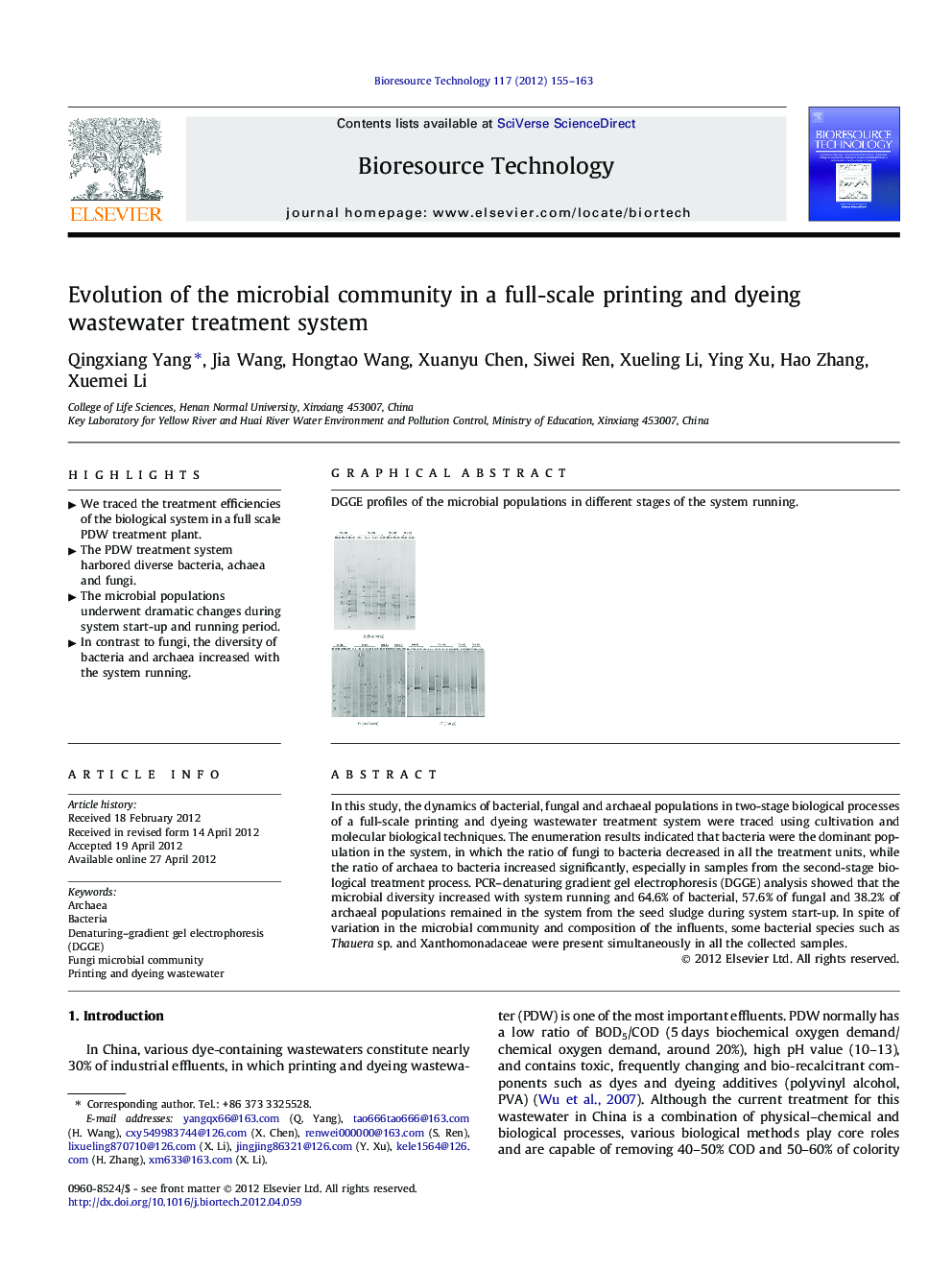| Article ID | Journal | Published Year | Pages | File Type |
|---|---|---|---|---|
| 681501 | Bioresource Technology | 2012 | 9 Pages |
In this study, the dynamics of bacterial, fungal and archaeal populations in two-stage biological processes of a full-scale printing and dyeing wastewater treatment system were traced using cultivation and molecular biological techniques. The enumeration results indicated that bacteria were the dominant population in the system, in which the ratio of fungi to bacteria decreased in all the treatment units, while the ratio of archaea to bacteria increased significantly, especially in samples from the second-stage biological treatment process. PCR–denaturing gradient gel electrophoresis (DGGE) analysis showed that the microbial diversity increased with system running and 64.6% of bacterial, 57.6% of fungal and 38.2% of archaeal populations remained in the system from the seed sludge during system start-up. In spite of variation in the microbial community and composition of the influents, some bacterial species such as Thauera sp. and Xanthomonadaceae were present simultaneously in all the collected samples.
Graphical abstractDGGE profiles of the microbial populations in different stages of the system running.Figure optionsDownload full-size imageDownload as PowerPoint slideHighlights► We traced the treatment efficiencies of the biological system in a full scale PDW treatment plant. ► The PDW treatment system harbored diverse bacteria, achaea and fungi. ► The microbial populations underwent dramatic changes during system start-up and running period. ► In contrast to fungi, the diversity of bacteria and archaea increased with the system running.
